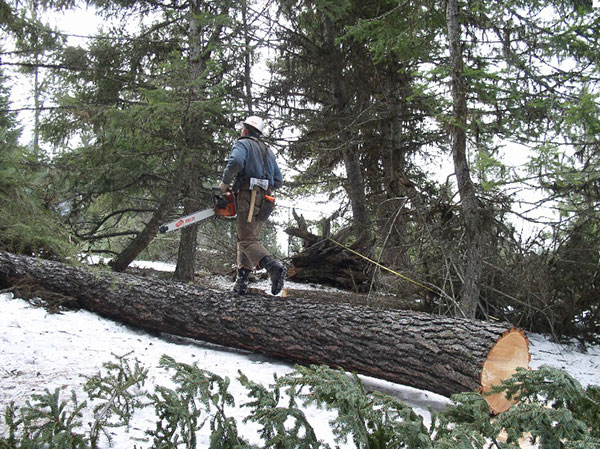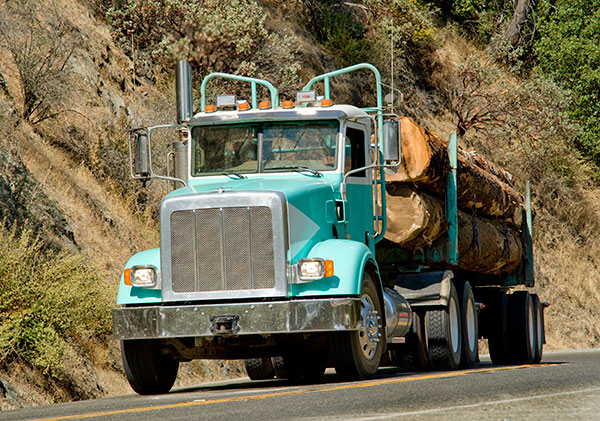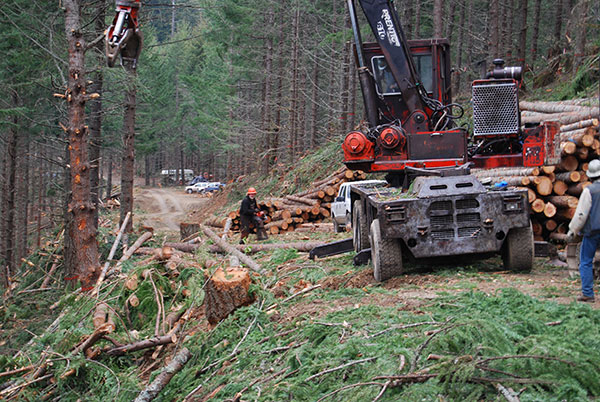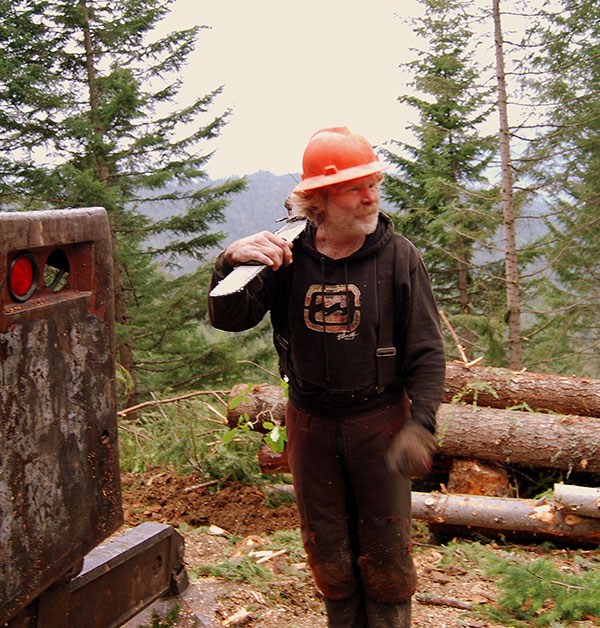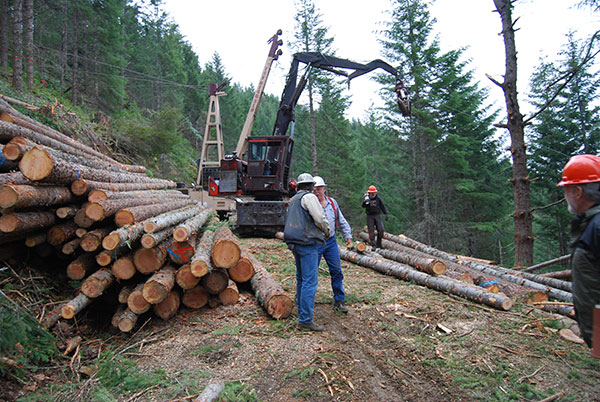Sustainable Communities
The O&C Lands are essential to the social and economic well being of western Oregon communities. Sustained yield forestry on O&C lands provides jobs, supports local economies and helps pay for essential public services.

The O&C Lands are essential to the social and economic well being of western Oregon communities. Sustained yield forestry on O&C lands provides jobs, supports local economies and helps pay for essential public services.
Many citizens are unaware of the range of services provided by Counties. Most public services in Oregon are provided either by Counties alone, or are provided jointly by Counties and the State:
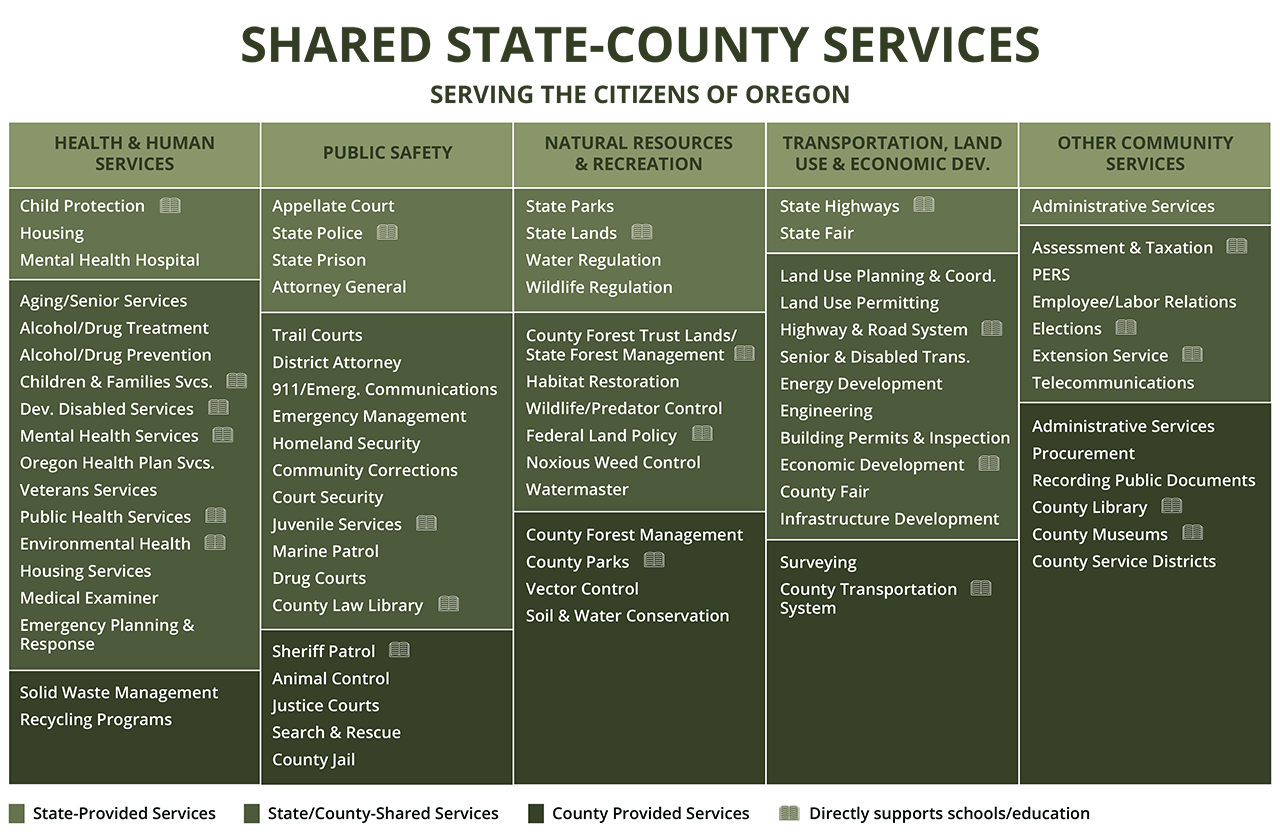
O&C revenues are unrestricted, meaning they can be used for essential services according to local needs. For most Counties, the leading local uses of O&C revenues include:
The use of O&C payments to finance County general funds has been a very significant factor for the O&C Counties and historically made up as much as 80 percent of an individual County’s discretionary budget. When harvest levels collapsed in the early 1990s due to changes in Federal policies, shared timber receipts dropped by almost 90 percent. Thereafter, Congress adopted a series of temporary “safety net” measures that resulted in payments to Counties in lieu of timber receipts. The most recent such measures, known as the Secure Rural Schools and Community Self-Determination Act (SRS) program, ended in 2018. There is little prospect of any further renewals of SRS. As a result, Counties are once again reliant on the timber harvest receipts to support local services. Unfortunately, the level of support for County budgets from current and projected BLM management is drastically below historic levels:

Some have suggested that Counties simply raise taxes in order to offset reductions in shared timber receipts. The Governor’s O&C Task Force in 2012 found that county governments and residents have limited ability to make up lost O&C funding. For example, the Task Force estimated that increasing property taxes and adding taxes such as a lodging tax and real estate transfer tax—if enacted by voters—could only recover between 8 to 24 percent of lost federal payments. High levels of poverty make enactment of any tax increases very difficult.
The Counties do not expect O&C payments to be increased to provide the purchasing power of payments received in the 1970s and 1980s, but the Counties do expect the federal government to keep its commitment and to follow the law. The O&C Act, properly implemented, will continue to be an important source of revenue supporting essential County services.
The BLM reports its timber program alone supports over 1,300 jobs and $78 million in earnings. Perhaps double that number in timber-related employment is possible if the BLM increases timber harvests as required under the O&C Act.
It is not just about timber. Sustained-yield forestry benefits a wide variety of small businesses and industries, from accounting to food and lodging. For example, the Oregon Forest Resources Institute estimates that statewide, one million board feet of timber supports 11 direct, indirect and induced jobs. Economic activity from sustained-yield forestry, in addition to revenue generated by O&C timber receipts, also supports hundreds of public sector jobs, from nurses and bookkeepers to clerks and sheriff’s deputies.
The 90 percent decline in timber harvests on O&C lands has taken a considerable economic toll on rural western Oregon. It’s no coincidence that communities with the largest proportions of O&C lands have higher levels of unemployment and poverty compared to Oregon’s urban centers.
While the O&C Counties will continue to work to diversify our economies, including promotion of tourism and recreation, increasing O&C timber harvests is essential to creating more family-wage jobs in rural western Oregon. That’s because the average forest products industry jobholder earns approximately $58,000 while the average recreation-based employee earns approximately $22,000, less than 40 percent of the pay in timber-related industries.
The O&C Counties are optimistic. The social ties between rural communities and the forests that surround them, once very strong, can and should be restored. The O&C lands are unquestionably an environmental asset and with proper management can also once again be an economic engine for local communities, providing jobs and revenue for County services.
